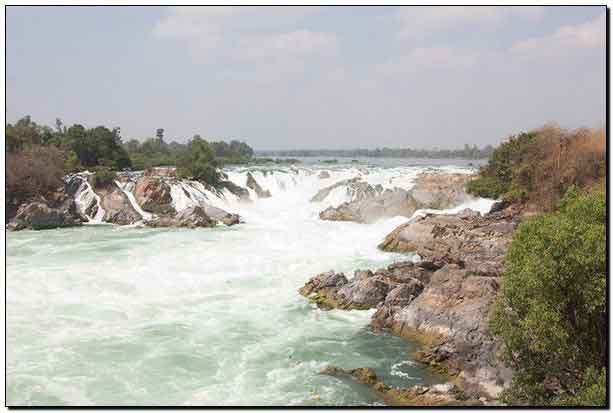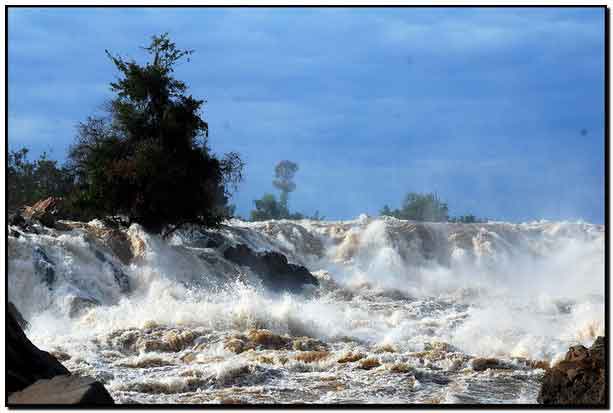The Khone Pha Pheng Falls are the largest water falls in Southeast Asia – the highest fall reaches 21 meters. The Khone Falls are the reason that the Mekong is not fully navigable from Viet Nam to China.

Because of the falls, the French colonialists could not send gun boats and supplies by river from Saigon up to Vientiane and Luang Prabang. Likewise, they could not get agricultural products exported from Laos by using Mekong. So, they came up with the white elephant project of building a single-track railway between Don Det and Don Khon. It was a temporary railway from 1893, but became longer (seven kilometers in total) and stronger (i. e., permanent tracks, real locomotive) in 1897.

It was the first and only railway ever built, opened and operated in Laos until 2009. The last train probably traveled the tracks in 1940 when Japanese troops took over from the French colonial masters.
The area upstream from the falls is characterized by thousands of islands and countless waterways, giving the area its name Si Phan Don or ‘4,000 islands’. Half of these are submerged when the Mekong River is high at the end of a rainy season. The principal islands of Si Phan Don are Don Khong, Don Det, and Don Khon. Accommodation is available on these islands.
Freshwater (Irrawaddy) dolphins can sometimes be seen near the southern tip of Don Khon looking towards Cambodia.

On Don Khon, you can also see the Liphee Waterfall, which is very powerful at the end of the rainy season. Unfortunately, this picture is from my second visit, which was at the end of the dry season.

